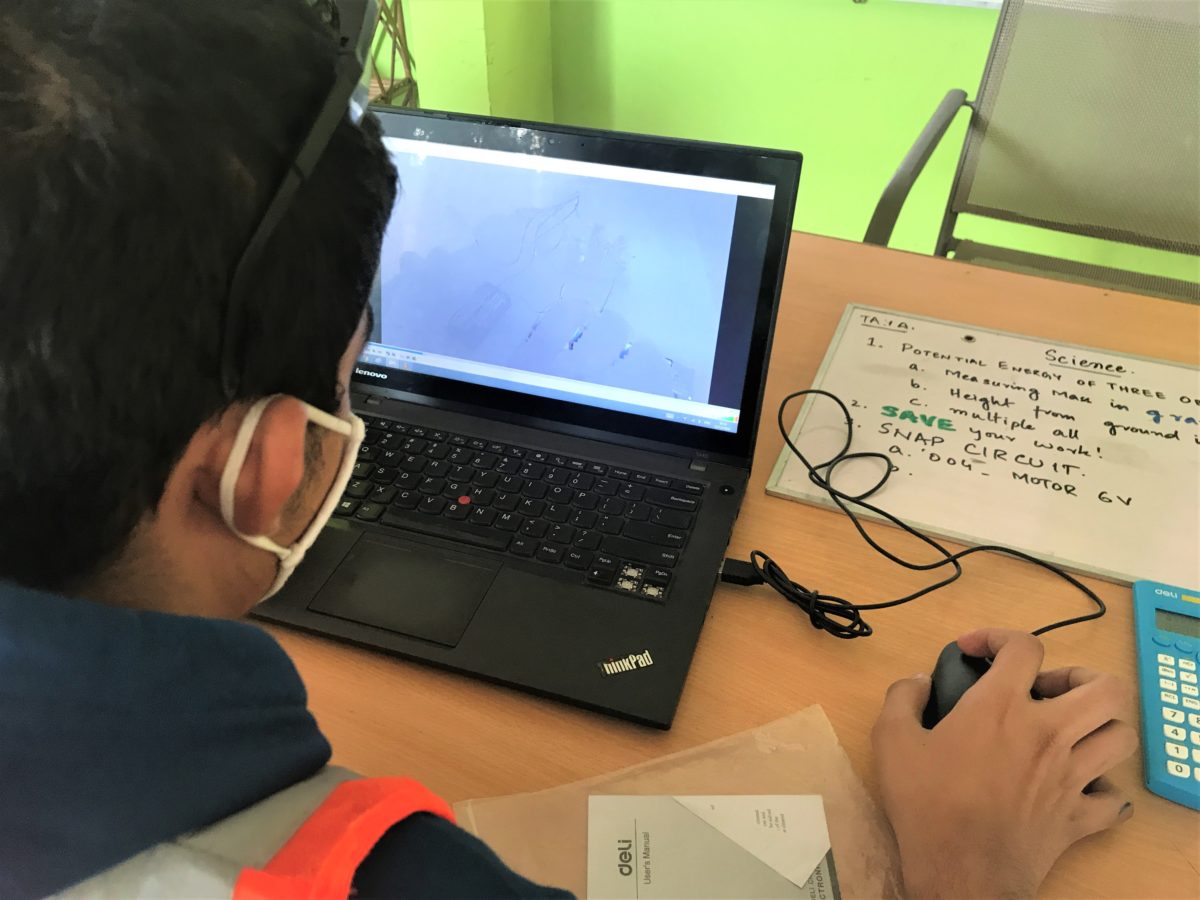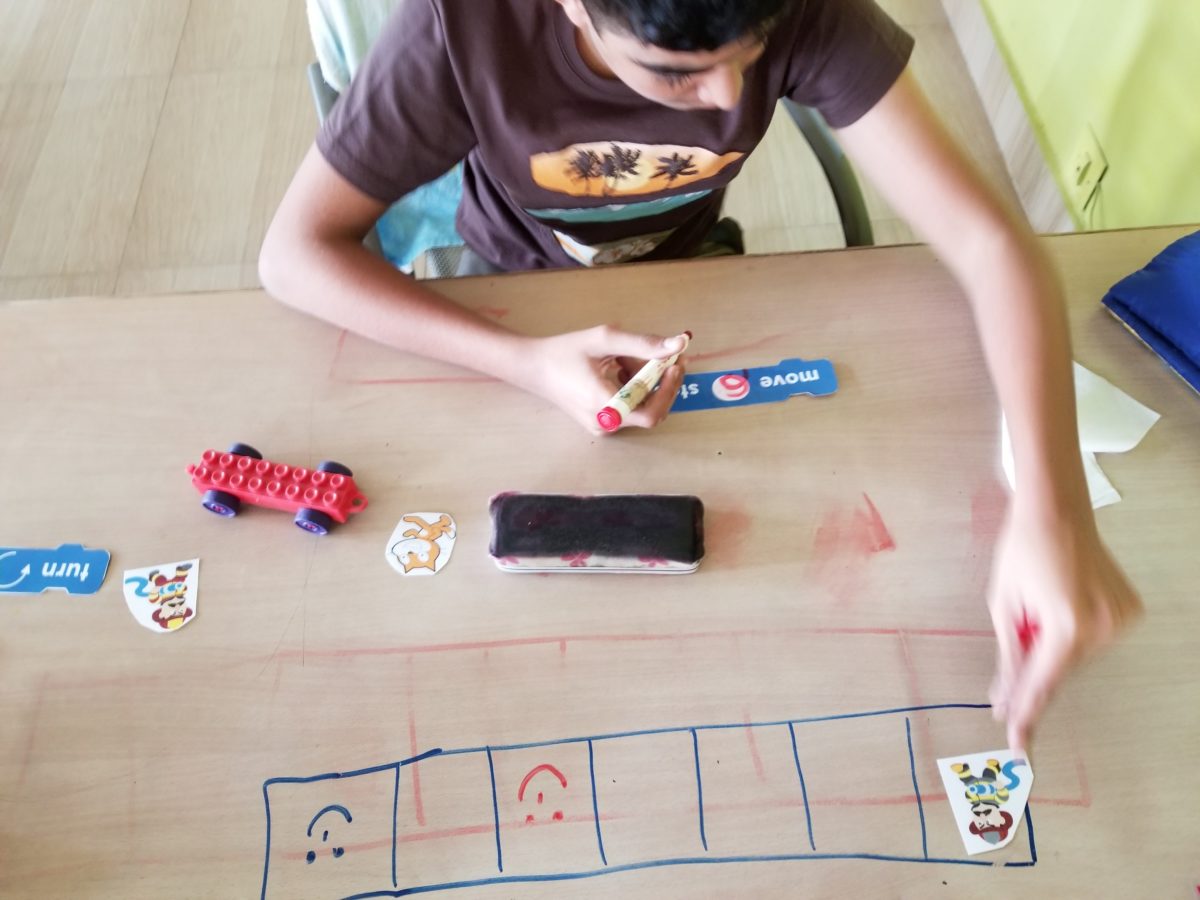In August 2015 as parents of a child on autism spectrum, we started on an uncertain path. We explored the option of running a home school for Taha and see if we could help him more by taking a personal interest in his education.

We had been blessed from the beginning in terms of therapists and loving caregivers. With Taha’s School we found equally loving teachers who had no real or prior training in dealing or working with special needs students but brought a great deal of empathy and understanding with them.
We wrote this post to have it serve as a collection of resources that we could share with other special needs parents who are interested in exploring the path we took. Right now, it only includes a handful of videos and two study guides that we put together with help from teachers who worked with Taha. We hope to add more videos as we proceed. It is not much, but it is a start. We hope that with it together will get a glimpse of the future we all want for our children.
Taha’s School YouTube Channel – Play List
A special note of thanks to all of Taha’s current and past teachers and Taha’s grandparents who made the school, its environment and its many resources possible.
As parents we know we have a role to play in the education of our children, but we are not sure since most of us are not teachers. What Taha’s school taught us that when it comes to special needs education, all it takes is a little bit of love, empathy, and a willingness to learn a new way to teach children with special needs. The path is fraught with dead ends and wrong turns but if we get involved as parents in designing the educational curriculum for our children, the result can be quite rewarding. Teachers cannot do it alone. They need help and guidance from parents. Especially when it comes to goal setting, working at home with the children after school, assessing and evaluating performance. They need the push to reach for higher goals and step outside their comfort zone. Conventional educational training and special needs education training spends a great deal of time on the mechanics of teaching and engagement. Frameworks are checklist driven. If the checklist is ticked off, work is done.
But such frameworks leave teachers un-prepared to set unconventional, specialized, or ambitious goals. Each child is different and has different needs. As parents we have a stronger sense of our children can or cannot do, should or should not do. Teachers need that support to carve a path that results in meaningful progress for their students.
The journey that started tentatively that year by the Grace of the Almighty continues. In the beginning our focus was on helping Taha settle down into a routine, pick up conversation patterns, write, do work independently, and explore the environment around him. As Taha progressed with his milestones, we introduced basic algebra, slightly more complex arithmetic problems and finally an introduction to working with computers.
One final word. Please be patient with progress. It took us six years to get here. We hope that with what we share here, for some of you the journey maybe shorter.
Computer Science
The computer science bit represented an interesting challenge for us. We were weary of just giving Taha more screen time. What we really wanted was for him to understand how to approach complex problems and break them down into smaller sub problems. We also wanted him to walk through his thinking on paper or with materials before sitting down on a laptop to type in the code.
The starting point for us was Scratch, a tool created by MIT to teach computer science to young kids. It took a building block approach like Lego to teaching basic concepts from the subject to children who had no background in the field. We had used it successfully to teach an introductory course in problem solving to grade 6, 7 and 8 students at two separate schools.
There were many false starts before we finally figured out a model that worked. It took us a few years to finally crack the code.
Putting Taha in front of a screen did not work. Using headphones did not work. Just getting an instructor to walk him through Scratch did not work. Leaving him with it on his own did not work.
What worked? Asking questions.
When we asked ourselves, what is the first step, the first skill a child needs to solve a problem. The ability to break a problem down into smaller sub problems and attack each sub problem in the correct sequence. We were not sure if sequential thinking was the right term for this, but it fit the description and that is what we called it.
There are many ways to introduce sequential thinking in young children. The general idea is for them to get used to following increasingly complex set of instructions. You start with simple tasks and then slowly introduce complexity within the instructions being followed. Get them to solve mazes, puzzles, ordering numbers and letters and words in the right sequence. They all work. And we tried them with Taha.

Then come the real challenge. Helping him understand how to map what he had learnt to the concept of solving problems. The easiest way to do this was to get Taha comfortable with tackling a series of instructions. First on paper, then on floor of his home school. Then on the screen of the school laptop.

For instance, if we wanted him to move an object 5 steps to the right and then 2 steps to the left, we drew that grid on the floor of the school. Then we asked Taha to become a robot and do what he was told as a robot. Move one step forward. Turn right. Move two steps forward. Turn left. Move one step backward on the grid.
This one step was repeated multiple times over days in a fun way so that Taha understood the concept of a single instruction as well as that of being a bot. We then took the same instructions and mapped them to Scratch. The tasks Taha had to follow on Scratch were printed in large letters on a sheet of paper. By now he was comfortable with the concept of following a series of instructions and crossing them out. The sheet of paper was later replaced by large color full flash cards of Scratch instructions.
An instructor helped Taha follow that map and build the program on Scratch. In the first few attempts the instructor and Taha did it together till Taha became comfortable with the approach. Then Taha was asked to attempt it on his own under some supervision, guidance, and prompts.
We would write down instructions for Taha to follow and cross them one by one as they were completed. The foundation we built in sequential thinking and problem solving came in handy here.
An important key element is cross training. Introduction to programming requires a child to have exposure to a multitude of problem-solving approaches and models. The best way to do this is to gamify learning.
We use Sudoku, cross word puzzles, Human Resource Machine (another programming tool), scrabble and creative writing sessions as part of group work to make sure that Taha is comfortable with looking at problems with different perspectives. That is his tool kit of approaches. Teaching him computer science is not limited to just Scratch. It needs to have much broader lens.
Creative writing serves as a great example. In college we used to play pass the story in classes of professors who were boring. A blank sheet of paper would start from the back of the class an each of us would add a sentence to the story. The finished story in the front of the classroom would be a collage of creativity. We brought the same concept to Taha’s home school. Each teacher would contribute a small line to Taha’s story turn by turn. Taha would contribute his line on his turn. Taha would also write down all the lines for his teachers as they were contributed. And the story would unfold as part of a game that was carried thirty year forward from an old college memory.
This is a journey that does not happen in one day. Repetition, reinforcement, encouragement, and play is key. With children, not just special needs children, teaching in the classroom needs to feel like play time. This essentially means that the child feel he is part of a group trying to do something which is important and meaningful to the group. The best way of doing this is to create an environment of fun and games in your home school. Let the teachers take turn and do one small part of the problem, then ask the child to take his turn and make his contribution. It starts slow but once the child is comfortable with the model, you would be surprised at how quickly they grow.
Science curriculum
Teaching computer science to Taha taught us the importance of one-on-one visual learning. Once again there were many false starts. We tried teaching science from a textbook, we tried incorporating basic experiments in the classroom, we added study trips and exploratory trips in the garden, but the science quickly grew to a point where we needed serious help. Other than teaching science from a textbook, everything else had an impact.
Textbooks do not work for special needs children. Activities do. We finally settled on an experiment driven approach. We were very fortunate to run into a Nest I/O startup that was focused on STEM education and with their help and assistance we found an instructor who helped put together a physics curriculum for Taha. We went back and forth developing an outline of experiments that would walk Taha through basic physics concepts. Electricity, magnetism, batteries, gravity, leverage, mass, kinetic and potential energy.
Taha loved Bob the Builder animated series and we used an engineering theme inspired from Bob the Builder. From basic woodwork to a concept driven science curriculum that used simple experiments in the classroom to illustrate scientific principles.
Taha’s Home School YouTube channel
As of now Taha’s YouTube channel has 9 videos. More are in the works. The videos are very basic and were produced to give you a sense of what we were trying to do. The production quality is limited because they were shot and cut using our teachers’ phones. They are meant to compliment the study guides shared here. Feel free to use them as you see fit.
